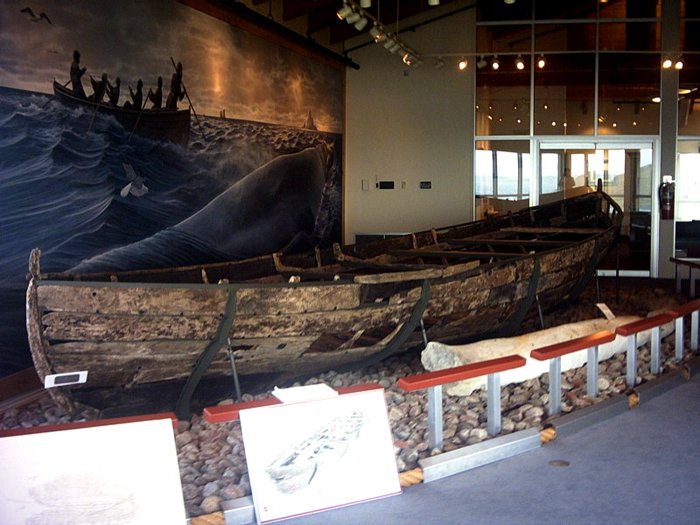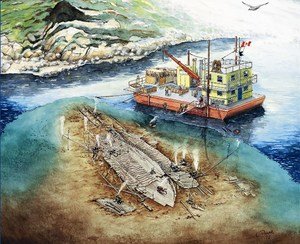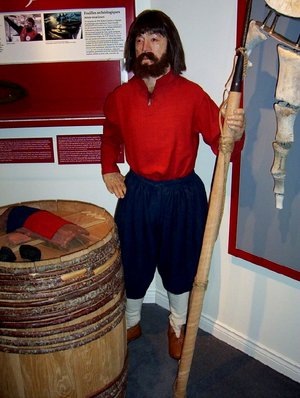Red Bay
While the cod fishery dominates Newfoundland and Labrador’s history, another type of fishery was just as important to many of the ships travelling to Newfoundland and Labrador in the 16th century: the whale fishery.
The Basque whalers from the coasts of southwestern France and northern Spain were at the forefront of the whale fishery. Seeking these huge creatures, the Basque established stations in the southern Labrador’s Red Bay as a base for their fishery.
Whales provided a source of oil for fuel and lamps, and the oil was in high demand in 16th-century Europe.
For much of the 1500’s, Red Bay was the home of whaling stations harvesting the large local population of whales to fill the market for oil in Europe. The Basque people, long renowned for their maritime tradition, made a unique enterprise in Labrador that shows that there was more than just cod along this province’s shores.
Launching an estimated 15 ships and 600 men each season, the Basque captured thousands of whales off the coast of Labrador and in the Strait of Belle Isle from 1530 to 1600. Due to a declining whale population, hostile relations with natives, and conflict between Spain and England, the Basque left Red Bay at the beginning of the 17th century.
Fifteen years of archaeological work, starting in 1978, including underwater archaeology, produced a number of significant finds, including the remains of 20 whaling stations along the shores of Red Bay and the wrecks of three galleons and several smaller vessels. These wrecks include the galleon San Juan, which is one of the oldest and best-preserved shipwrecks found in the Americas. These findings indicate not only that the Basque held a presence in Labrador but that their ventures across the Atlantic were a major economic endeavour and attracted significant numbers of ships and whalers.
With a centre that features original artifacts, tours, and a detailed interpretation centre, Red Bay is an excellent place to discover these early visitors to the province and to discover that the early fisheries were about more than cod.
HSA’s Contribution
“The Underwater Archaeology of Red Bay”
Historic Clothing
THSA provided $25,000 for the translation of the Red Bay Underwater Archaeological Report.
HSA contributed $1,800 to supply historically accurate Basque costumes for interpreters.



